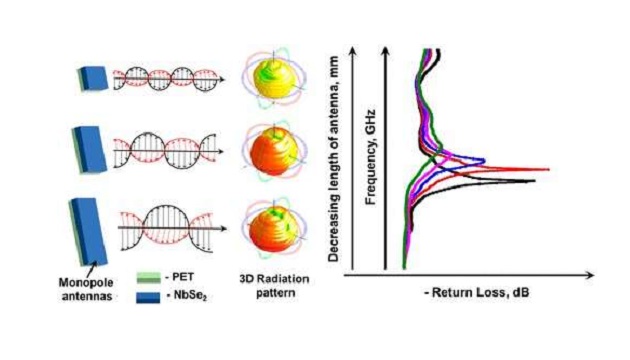When it comes to electronics, bigger usually isn’t better. This is especially true for a new generation of wearable communication systems that promise to connect people, machines and other objects in a wireless “internet of things.” To make the devices small and comfortable enough to wear, scientists need to miniaturize their components. Now, researchers in ACS Nano have made the tiniest radio-frequency antennas reported yet, with thicknesses of about 1/100 of a human hair.
Antennas that receive and transmit radio waves are usually made of metal conductors, such as aluminum, copper and silver. Although these materials have high electrical conductivity, they do not perform well in ultrathin, lightweight antennas. As a result, most metal-based antennas are thicker than 30 micrometers in diameter, which limits their application in miniaturized electronic devices. To make even tinier antennas, Keun-Young Shin, Ho Seok Park and colleagues wanted to try using extremely thin sheets of a 2D material that consisted of a layer of metallic niobium atoms sandwiched between two layers of selenium atoms (NbSe2).
The researchers made their antenna by spray-coating several layers of NbSe2 nanosheets onto a plastic substrate. They then tested the 885 nm-thick antenna, finding that a 10 × 10 mm2 patch of the ultrathin material performed well, with a radiation efficiency of 70.6%. The device propagated radio frequency waves in all directions. By changing the length of the antenna, the frequency could be tuned from 2.01 to 2.80 GHz, which includes the frequency required by Bluetooth and Wi-Fi technologies. Also, the antenna could be bent and stretched without large changes in its performance. In addition to wearable electronics, the new antennas could someday find applications in deep space communications systems because the material would become a superconductor in the very cold temperatures of outer space, the researchers say.








